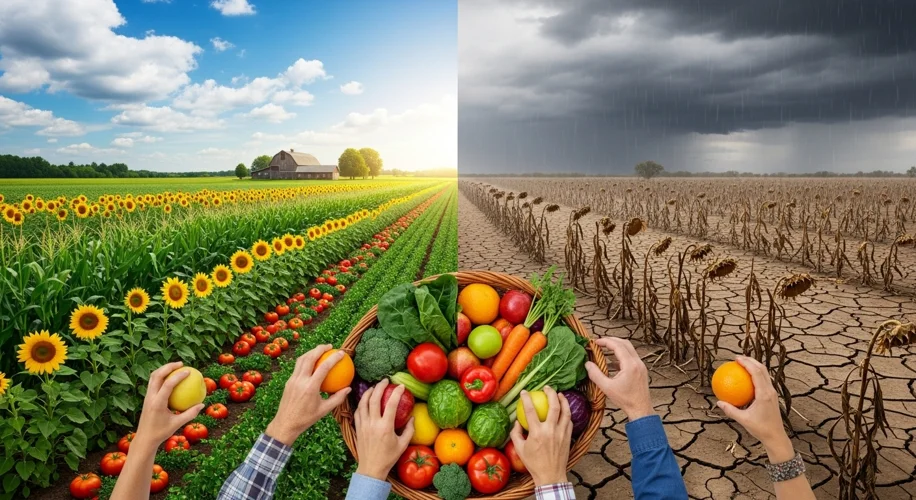Did you know that the very weather patterns that sustain our planet are shifting, and this shift is directly impacting the food on our plates?
As a scientist who studies climate, I’ve seen firsthand how subtle changes in temperature and rainfall can have massive ripple effects. Today, I want to talk about a critical intersection: climate change and food insecurity.
What is Food Insecurity?
Food insecurity isn’t just about not having enough to eat. It’s about not having consistent access to enough safe, nutritious food for an active, healthy life. This can mean skipping meals, reducing the variety of food eaten, or worrying about where your next meal will come from. It’s a complex issue that affects millions worldwide, and climate change is unfortunately making it even harder to solve.
How Climate Change Affects Our Food
Climate change impacts our food systems in several key ways:
- Extreme Weather: We’re seeing more intense droughts, floods, heatwaves, and storms. These events can destroy crops, kill livestock, damage fishing grounds, and disrupt transportation networks, making it harder to get food from farms to our tables.
- Changing Growing Seasons: Shifting temperatures and unpredictable rainfall patterns mean that traditional planting and harvesting seasons are becoming less reliable. Some areas that were once fertile may become too hot or dry, while others might experience new pest problems.
- Water Scarcity: Many agricultural regions rely on consistent water sources. As glaciers melt and rainfall patterns change, access to fresh water for irrigation becomes more uncertain.
- Ocean Acidification and Warming: For seafood lovers, this is critical. Warmer oceans and increased acidity due to carbon absorption harm marine life, affecting fish populations and the communities that depend on them.
The Unequal Impact
It’s important to recognize that these impacts aren’t felt equally. Marginalized communities, often those who have contributed the least to climate change, are frequently the most vulnerable. They may live in areas more prone to extreme weather, have fewer resources to adapt to changing conditions, and rely more heavily on local agriculture for their livelihoods and food supply.
For example, in many urban areas, communities with less access to green spaces and fresh food markets (often Black and brown communities) already face higher rates of food insecurity. When climate change impacts broader food supply chains, these disparities can deepen.
Looking Towards Sustainable Solutions
While the challenges are significant, there are many promising solutions focused on building more resilient and sustainable food systems:
- Climate-Smart Agriculture: This includes practices like water conservation, drought-resistant crops, and soil health management to help farms adapt.
- Urban Farming and Local Food Systems: Growing food closer to where people live can reduce transportation emissions and create more direct access to fresh produce, especially important in food deserts.
- Reducing Food Waste: A significant portion of the food produced is wasted. Tackling this waste helps conserve resources and reduce the strain on food systems.
- Support for Smallholder Farmers: Many of the world’s farmers are smallholders who are highly vulnerable to climate impacts. Providing them with resources, training, and access to markets is crucial.
The connection between our changing climate and the food we eat is undeniable. By understanding these links and supporting innovative, sustainable solutions, we can work towards a future where everyone has access to the nutritious food they need, even in the face of a changing planet. It’s a journey we’re all on, and informed action is key.

